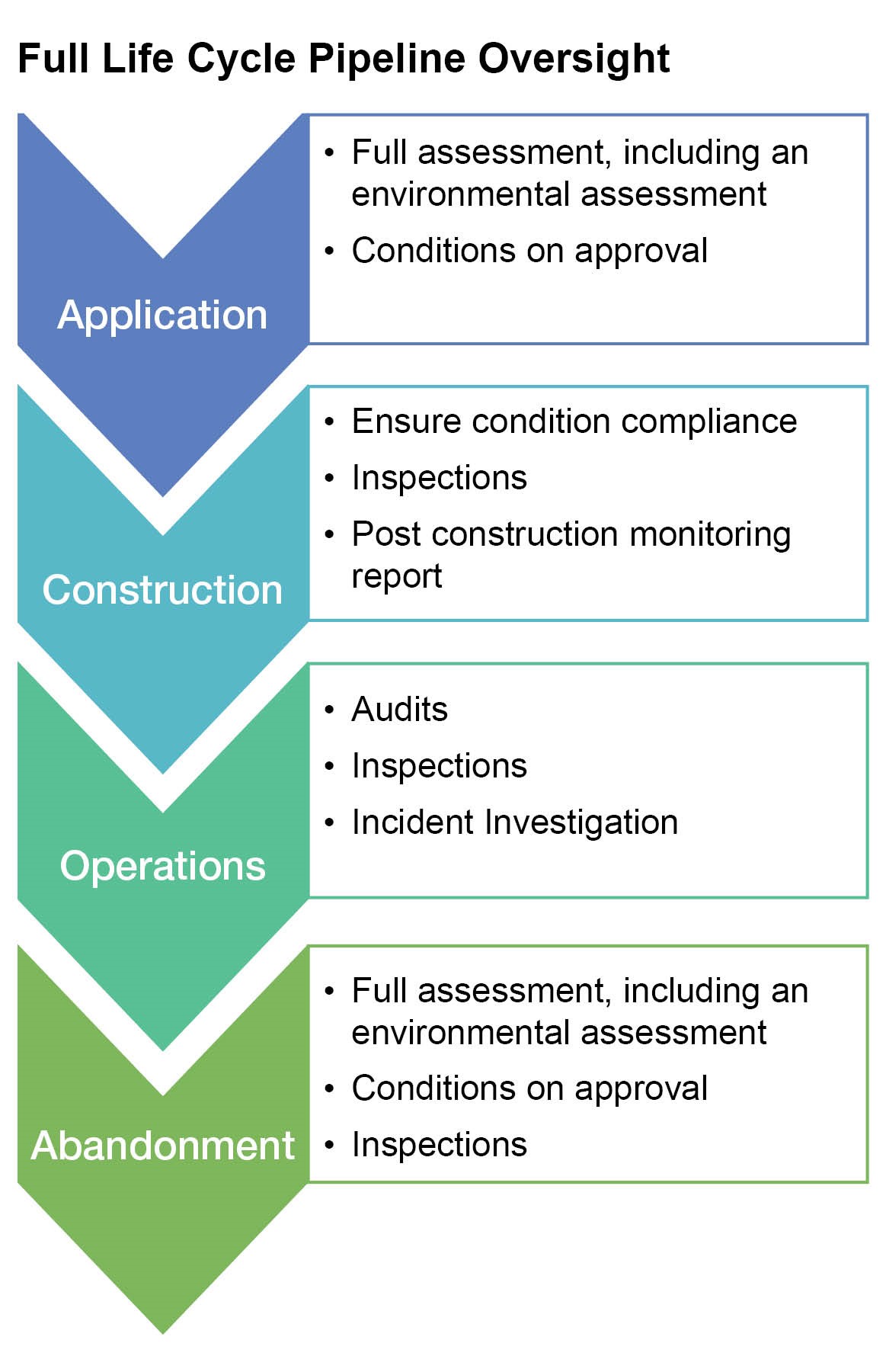
Full Lifecycle Pipeline Oversight
Fact Sheet: Full Lifecycle Pipeline Oversight [PDF 294 KB]
Before a pipeline or a facility can be built, a proponent must file an application with the Canada Energy Regulator (CER). The application must include, among other things, information on how the pipeline will be built and operated, the measures in place to protect the safety of workers and the public, how the company has addressed the interests, including the rights of Indigenous peoples, and the company’s plan to minimize environment impacts.
When considering an application, the Commission of the CER assesses the pipeline’s proposed design, construction and operation to make sure it’s safe, protects people and the environment, and it is in the public’s interest. The Commission of the CER assesses the proposed pipeline design making sure it meets the Onshore Pipeline Regulation and standards set by the Canadian Standards Association (CSA).
If a pipeline project is approved, the CER continues to monitor, assess and review the pipeline’s operations as long as it is in service. This is done through regular inspections, audits and incident investigations to make sure the pipeline operator complies with regulations that protect public safety, property, and the environment. Where Indigenous peoples have interests in the area of a project, the company regulated by the CER may work with them so they can be involved in aspects of monitoring a project.
CER Inspection Officers conduct front line inspections in locations throughout Canada. If companies are found to be in non-compliance with regulations, they will take immediate enforcement action.
Determining where and when to conduct compliance verification is a key factor in pipeline safety and the CER uses a ‘risk-based’ system. The system reviews information about the location, type of facility, company compliance history and other technical factors to decide where to direct inspections.
The same model and system is used to conduct Audits and other Compliance Verification Activities through the entire lifecycle – from post-approval condition compliance to eventual abandonment.
If a company decides to take a pipeline out of service temporarily (decommission) or permanently (abandon), the operator must file an application with the CER.
The CER requires the company to make sure all necessary precautions are taken for safe decommissioning or abandonment of the pipeline or facility. This includes issues like use of the land, ground settling, soil erosion and land restoration.
If a pipeline is abandoned in place, the CER continues to regulate the pipeline and requires companies to monitor and report on them. Even after the restoration work is over, pipeline companies have an ongoing responsibility to landowners and the public to ensure the pipeline right-of way and the associated facilities remain safe.

Important things for you to know:
- An important part of the CER’s job is to review and assess project applications to determine if they are in the public interest. However, this is only one part – and merely the beginning – of our role
- The CER continues to regulate and oversee the safe and environmentally responsible operation of all federally regulated pipelines for their entire life.
Where to go for more information
- CER Website
- Phone: 403-292-4800
- Toll Free: 1-800-899-1265
- Follow us on Twitter @CER_REC
- Canada Energy Regulator
210-517 10 Ave SW
Calgary AB T2R 0A8
- Date modified:
